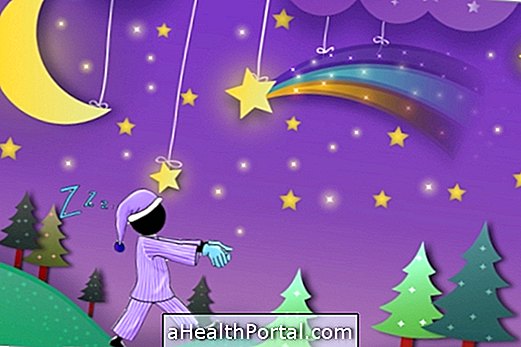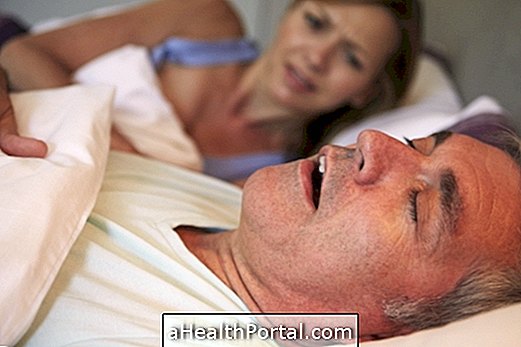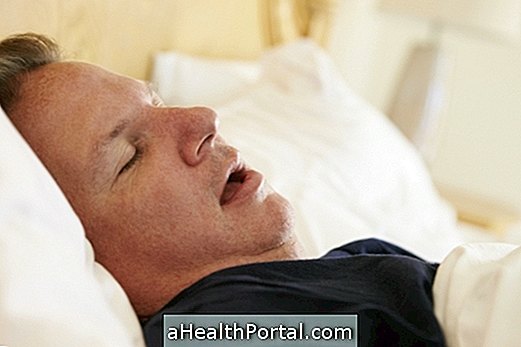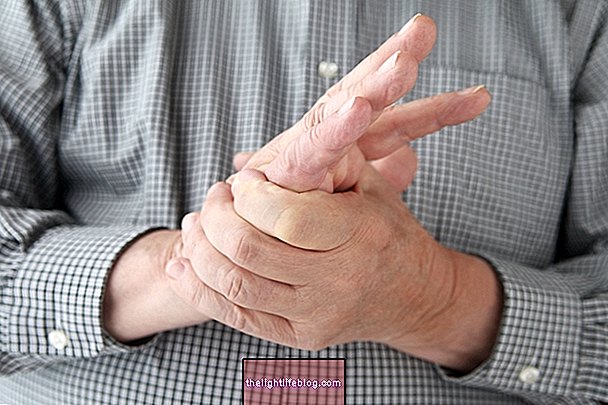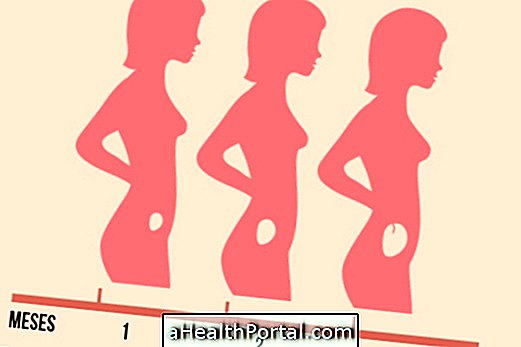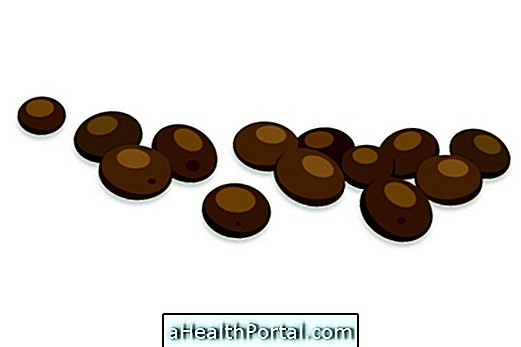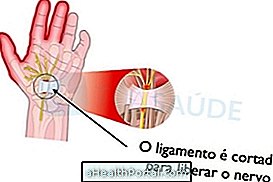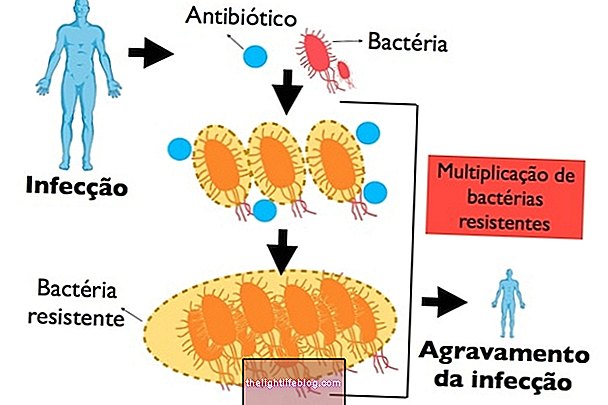Sleep disturbances are changes in the ability to sleep properly, either by brain changes, by deregulation between sleep and wakefulness, respiratory changes or movement disorders, and some common examples are insomnia, sleep apnea, narcolepsy, somnambulism or Restless legs.
There are dozens of sleep disorders, which can occur at any age, and are more common in children or the elderly. Whenever they exist, these disorders should be treated, for when they persist they can seriously affect the health of the body and mind. Understand why we need to sleep well.
If symptoms of sleep disturbance occur, the specialist for the diagnosis and treatment of the cause is the specialist for sleep, however, other professionals such as general practitioners, family doctors, geriatricians, psychiatrists or neurologists can evaluate the causes and indicate the correct treatment in most cases.
Some forms of treatment include cognitive-behavioral therapy, which teaches ways to improve sleep ability, and medications may be indicated. It is also important to determine and treat what is triggering these changes, be it depression, anxiety, respiratory or neurological diseases, for example.

1. Insomnia
Insomnia is the most common sleep disorder, and may be characterized by difficulty in getting to sleep, difficulty in staying asleep, awakening at night, waking up early or even being identified due to complaints of feeling tired during the day.
It may arise alone or be secondary to a disease such as depression, hormonal changes or neurological diseases for example, or be triggered by certain substances or remedies like alcohol, caffeine, ginseng, tobacco, diuretics or some antidepressants.
In addition, in many cases, insomnia is caused simply by the existence of inappropriate habits, which impair sleep ability, such as not having a bedtime routine, being in a very bright or noisy environment, eating heavily or taking energy drinks at night . Understand how using a cell phone at night can make you sleepy.
- What to do : In order to combat insomnia, it is necessary to go to the doctor's office, who can evaluate the existence or not of conditions or diseases that are causing insomnia, through clinical analysis and tests. It is advised to do the hygiene of the sleep, through habits that favor the numbness, and when necessary, medicines like melatonin or ansiolíticos can also be indicated.
Check out the main sleeping habits.
2. Sleep Apnea
Also called obstructive sleep apnea syndrome, or OSAS, this is a breathing disorder in which there is an interruption of the respiratory flow due to collapse of the airways.
This causes changes in sleep, resulting in an inability to reach deeper phases, making it difficult to rest properly. Thus, people with sleep apnea tend to become sleepy during the day, causing complications such as headaches, loss of concentration, irritability, memory changes and high blood pressure.
- What to do : The diagnosis is indicated by polysomnography, and the treatment is done with the use of adaptive oxygen masks, called CPAP, in addition to changes in habits such as losing weight and avoiding smoking. In certain cases, surgery may be indicated to correct narrowing or airway obstruction in the airways, caused by deformities, or the placement of implants.
Here's how to identify and treat sleep apnea.
3. Excessive daytime drowsiness
Excessive daytime drowsiness is the difficulty in staying awake and alert throughout the day, with an excess of sleep, which hinders the performance of daily activities and may even expose the person to risk while driving or handling equipment.
It is usually caused by situations that deprive the existence of adequate sleep, such as having little time to sleep, sleep interrupted several times or wake up very early, and also due to the use of certain medicines that cause sleep, or diseases such as anemia, hypothyroidism, epilepsy or depression, for example.
- What to do : The treatment is indicated by the doctor according to the cause of the problem, and consists especially in improving the quality of sleep at night. Scheduled naps during the day may be helpful in some situations and, in cases strictly indicated by the physician, the use of stimulant medications may be recommended.

4. Sleepwalking
Sleepwalking is part of the class of disorders that cause inappropriate behavior during sleep, called parasomnias, in which there is a change in the sleep pattern due to the activation of areas of the brain at inappropriate times. It is more common in children, although it may exist at any age.
A person with somnambulism manifests complex motor activities, such as walking or talking, and can then wake up or go back to sleep normally. Usually, there is little or no memory of what happened.
- What to do : most of the time, no treatment is necessary, and the condition tends to decrease from adolescence. In some cases, your doctor may prescribe antianxiety medications or antidepressants to help regularize sleep.
Understand sleepwalking and how to cope.
5. Restless legs syndrome
Restless leg syndrome is a neurological disorder that causes feelings of discomfort in the legs, usually associated with the uncontrollable need to move the legs, and usually occurs at rest or at bedtime.
It has a probable genetic cause, and can be worsened due to periods of stress, the use of stimulants such as caffeine or alcohol, or in the case of neurological and psychiatric diseases. This syndrome impairs sleep, which can cause daytime drowsiness and fatigue.
- What to do : Treatment involves measures to reduce discomfort and improve the quality of life of the individual, including avoiding the use of stimulants such as alcohol, tobacco, and caffeine, exercise and avoid depriving sleep as fatigue worsens painting. The doctor may also indicate medications such as dopaminergic, opioid, anticonvulsants, or iron replacement in specific cases.
Learn more about what is and how to treat this syndrome.
6. Bruxism
Bruxism is a movement disorder characterized by the unconscious act of grinding and involuntarily clenching the teeth, causing unpleasant complications such as dental changes, constant headaches, and cracking and pain in the jaw.
- What to do : The treatment of bruxism is guided by the dentist, and includes the use of a device embedded on the teeth to avoid wear, corrections of dental changes, methods of relaxation and physiotherapy.
Check out more guidelines of what to do to control bruxism.

7. Narcolepsy
Narcolepsy is an uncontrollable sleep attack, which causes the person to sleep at any time and any time, and it is necessary that the person make a lot of effort to avoid falling asleep. Seizures can occur a few or several times a day, and sleep usually lasts for a few minutes.
- What to do : Treatment includes behavioral measures to improve sleep, such as sleeping and getting up at regular times, avoiding alcoholic beverages or sedative-related medications, making scheduled naps, avoiding smoking and caffeine, and in some cases, use is indicated of medicines like Modafinila or other psychostimulants.
Learn more about identifying and treating narcolepsy.
8. Sleep paralysis
Sleep paralysis is characterized by the inability to move or talk shortly after waking up. It arises briefly due to a delay in the ability to move the muscles after the awakening of sleep. Some people may have hallucinations, such as seeing lights or ghosts, but this is because the brain has just awakened from a phase of sleep in which there are vivid dreams, called REM sleep.
People at higher risk of developing this phenomenon are those who have had a sleep deprivation due to the use of certain medications or due to the presence of other sleep disorders such as narcolepsy or sleep apnea.
- What to do : Sleep paralysis generally does not require treatment, as it is a benign change lasting for a few seconds or minutes. When experiencing sleep paralysis, one should remain calm and try to move the muscles.
Check out all about sleep paralysis.
